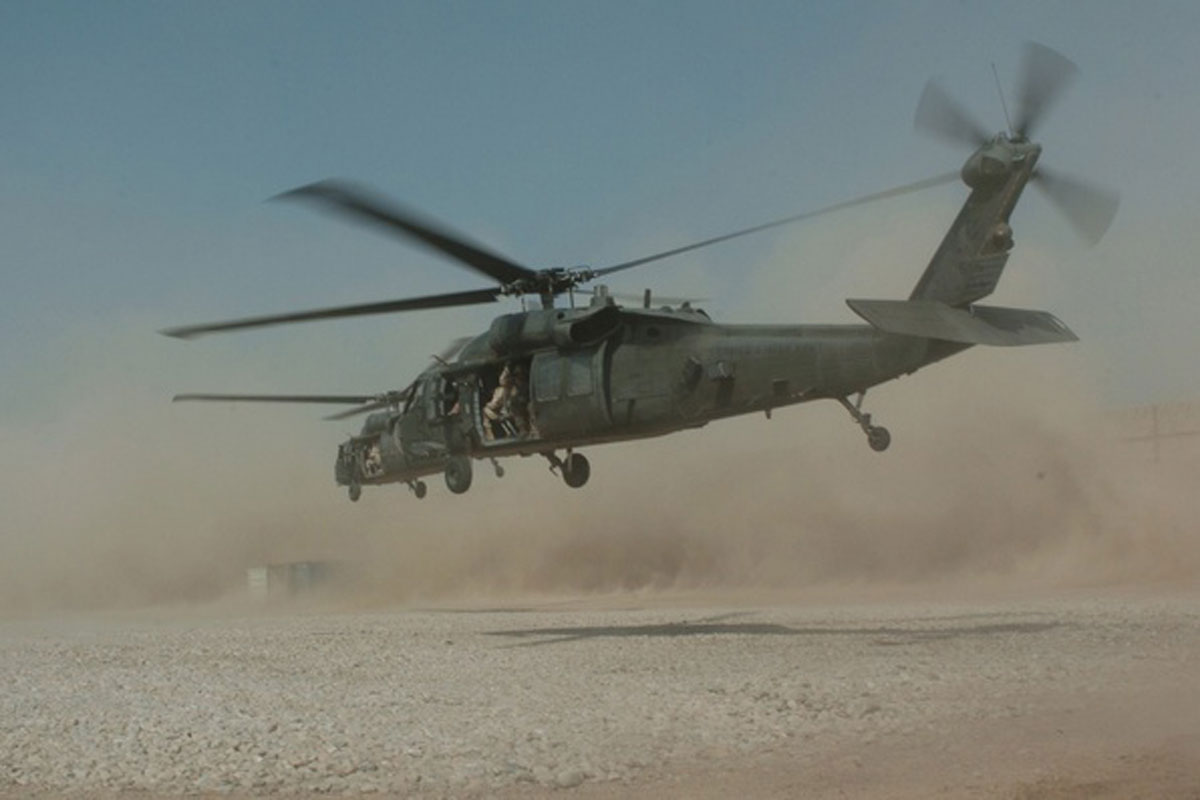Comprehending the Mechanics and Design Behind Uh 60 Helicopters
The UH-60 helicopter, generally referred to as the Black Hawk, stands as a peak of modern-day rotorcraft innovation, symbolizing a blend of robust design and elaborate mechanics. From its creation to its existing models, the advancement of this airplane showcases a fusion of technology and usefulness. As we peel back the layers of the UH-60's layout, a world of complex systems and thorough design comes to light. Understanding the auto mechanics and design behind this flexible airplane unveils a realm where accuracy meets power, and where each component plays a crucial role in achieving flight.
Background of UH-60 Helicopters
The history of UH-60 helicopters traces back to the late 1970s when the United States Military looked for a innovative and functional energy helicopter to change its aging fleet. In reaction to this need, the Sikorsky Aircraft Company created the UH-60 Black Hawk helicopter. Presented in 1979, the UH-60 swiftly came to be a staple in military operations due to its outstanding capabilities.
The UH-60 was made to stand out in a variety of objectives, including troop transport, medical discharge, electronic war, and special procedures. Its ability to adapt to different duties made it a valuable possession to the U.S. uh 60. Military and various other army forces around the globe
Throughout the years, the UH-60 platform has undergone numerous upgrades and variations to improve its efficiency and equal evolving goal requirements. These helicopters have actually seen considerable service in conflicts such as the Gulf War, Afghanistan, and Iraq, showcasing their integrity and convenience in diverse operational settings. The UH-60's rich history is a testimony to its long-lasting heritage as a leading energy helicopter.

Engine and Power Equipments
Utilizing cutting-edge propulsion technology, UH-60 helicopters are geared up with advanced engine and power systems to make sure optimal performance and integrity in a variety of operational situations. The UH-60, commonly called the Black Hawk, is powered by two General Electric T700-GE-701D engines, each efficient in supplying up to 1,940 shaft horse power. These turboshaft engines offer the necessary drive for the helicopter to bring out its objectives properly, including troop transportation, clinical evacuation, and battle support.

Blades System and Aerodynamics
Just how do the rotor system and aerodynamics of UH-60 helicopters contribute you could try this out to their operational effectiveness and trip capabilities? The blades system of the UH-60 helicopter plays a crucial duty in providing lift and propulsion.
Aerodynamics also play a key duty in the efficiency of UH-60 helicopters. The streamlined fuselage and blades blade design decrease drag, enabling the helicopter to achieve greater speeds and far better gas effectiveness. The wind resistant style of the UH-60 additionally contributes to its ability to operate in diverse ecological this conditions, consisting of high altitudes and warm temperatures.
Avionics and Flight Control Equipment

In its intricate coordination with the blades system and the rules of aerodynamics of UH-60 helicopters, the avionics and flight control systems develop a crucial network of modern technologies forming the airplane's operational capabilities. In the UH-60, these systems consist of electronic display screens, communication radios, GPS navigation, weather condition radar, and auto-pilot systems.
The trip control systems of the UH-60 are accountable for equating the pilot's inputs right into the appropriate adjustments to the rotor system, guaranteeing steady trip and maneuverability. These systems include hydraulic actuators, servos, and computers that collaborate to control the tail and primary blades, in addition to other flight control surface areas. By precisely managing the helicopter's trip characteristics, these systems make it possible for pilots to carry out a variety of objectives, from transport and search-and-rescue to deal with procedures, with precision and confidence.
Function and Applications in Aeronautics
Avionics systems in UH-60 helicopters encompass an array of electronic systems that help in navigation, communication, monitoring, and managing various airplane functions. These systems consist of electronic displays, auto-pilot systems, communication radios, GPS navigation equipment, and weather radar. Furthermore, these systems integrate security features such as autopilot modes, surface recognition cautioning systems, and stability augmentation systems to boost the total safety and operational abilities of the UH-60 helicopters in different goals, consisting of troop transportation, medical evacuation, search and rescue, and airborne firefighting.
Conclusion
In final thought, the UH-60 helicopter is a flexible aircraft with an abundant history and progressed engineering. Its engine and power systems, blades system, aerodynamics, avionics, and flight control systems all interact to make it a reliable and trustworthy maker. The UH-60's role and applications in aviation are vast, varying from armed forces procedures to browse and rescue missions. Its continued advancement and usage show its significance in the field of aeronautics (uh 60).
In its intricate control with the rotor system and aerodynamics of UH-60 helicopters, the avionics and trip control systems develop an important network of modern technologies shaping the aircraft's operational abilities.The trip control why not look here systems of the UH-60 are responsible for translating the pilot's inputs into the appropriate adjustments to the blades system, guaranteeing steady flight and maneuverability. Avionics systems in UH-60 helicopters encompass a variety of digital systems that aid in navigating, communication, surveillance, and regulating various airplane functions. Additionally, these systems include safety attributes such as autopilot settings, surface recognition alerting systems, and stability augmentation systems to enhance the overall safety and functional abilities of the UH-60 helicopters in different goals, consisting of army transport, clinical evacuation, search and rescue, and aerial firefighting.
Its engine and power systems, blades system, aerodynamics, avionics, and flight control systems all function together to make it a dependable and effective machine.